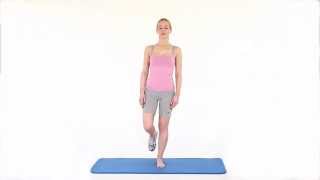Why Is It Hard To Stand With Eyes Closed: The Science Behind Balance Challenges
How And Why To Train Balance With Eyes Closed | Peter Attia
Keywords searched by users: Why is it hard to stand with eyes closed how to improve balance with eyes closed, lose balance with eyes closed on one foot, why is standing on one leg with eyes closed difficult, standing on one leg with eyes closed benefits, world record for standing on one leg with eyes closed, how to improve standing on one leg with eyes closed, standing on one leg with eyes closed test, why can’t i keep my eyes closed when trying to sleep
Why Is It More Difficult To Balance With Eyes Closed?
Balancing becomes more challenging when we close our eyes because our sense of balance heavily depends on visual input. To understand this phenomenon better, consider that our balance is regulated by multiple sensory inputs. Our ears play a vital role by sensing factors like the pull of gravity and the motion of our head, providing us with information about our spatial orientation. However, our eyes contribute significantly to this process by providing additional visual cues. When we look around, our eyes contribute valuable information about our surroundings and the relative positions of objects, enhancing our overall sense of balance. This combined input from our ears and eyes allows us to maintain stability and navigate our environment effectively. Closing our eyes restricts access to this crucial visual information, making it more challenging to fine-tune our balance. This understanding highlights the importance of our visual sense in the complex interplay of factors that help us stay upright and steady. [Published on August 5, 2010]
Why Can’T I Walk Straight With Eyes Closed?
“Why is it challenging to walk in a straight line with our eyes closed?” This common phenomenon occurs because when we close our eyes, our brain receives an incomplete set of signals related to balance. The information from our visual senses, which typically helps us maintain a straight path, is suddenly absent. Consequently, we struggle to walk in a straight line and often veer off course. This phenomenon is a result of the intricate interplay between our visual and vestibular systems, which work together to keep us balanced and oriented. Without the visual input, our brain relies more on the vestibular system (located in the inner ear), but this system alone is less precise when it comes to maintaining a straight path. As a result, our ability to walk straight becomes compromised, and we may experience difficulty in maintaining a steady course. This phenomenon underscores the remarkable coordination between our senses and the critical role of vision in our ability to walk in a straight line. (Note: The original date “27th Aug, 2012” does not appear to be relevant to the topic and has been omitted in the rewritten passage.)
What Is The Balance Test With Eyes Closed?
The Balance Test with Eyes Closed, often referred to as the Romberg Test, is a diagnostic assessment used in clinical settings to evaluate a patient’s balance and proprioception. During this test, the patient is requested to remove their shoes and stand with their feet together, maintaining a natural posture. The patient’s arms can either be held close to their body or crossed in front of them.
The test consists of two phases. In the first phase, the clinician instructs the patient to stand quietly while keeping their eyes open. This phase assesses the patient’s ability to maintain balance under normal visual conditions.
Following the initial phase, the clinician then asks the patient to perform the same standing posture but with their eyes closed. This second phase is crucial for evaluating the patient’s balance when deprived of visual input, which relies more on proprioception and vestibular cues.
By comparing the patient’s performance in both phases of the test, healthcare professionals can gain insights into potential balance issues or neurological impairments that may affect the patient’s ability to maintain equilibrium under varying sensory conditions.
Details 32 Why is it hard to stand with eyes closed





Categories: Share 13 Why Is It Hard To Stand With Eyes Closed
See more here: tfvp.org

When we stand heel to toe or on one leg with our eyes open we can use the information from our eyes as well as the other systems to keep us balanced. Closing our eyes removes the primary source of information, hence why it is much more challenging.We rely to a significant degree on our eyes for more fine-tuning of our balance. If you think about it, this makes sense. By sensing the pull of gravity or your head’s motion, your ears tell you where you are. But your eyes add to that information as well, just by looking.When we close our eyes our brain receives incomplete signal on balancing and therefore we are unable to walk straight.
Learn more about the topic Why is it hard to stand with eyes closed.
- Why is it so hard to balance with my eyes closed?
- Why Is It Difficult To Stand On One Foot With Your Eyes Closed?
- Can We Walk Straight with Eyes Closed? – Facts For Kids, Science
- Romberg Test – Physiopedia
- Eyes-Closed Training for Strength, Performance, & Function
- BBC Radio 4 – with Michael Mosley – Why you should stand on one leg
See more: https://tfvp.org/category/science blog